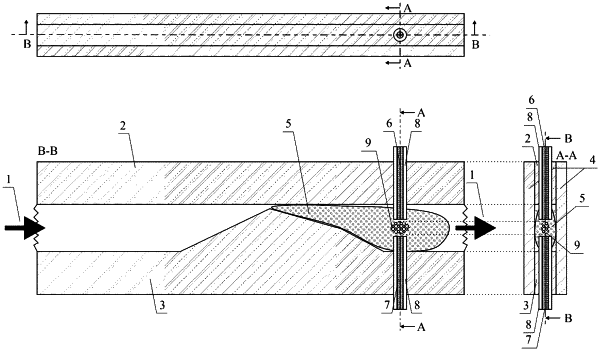| CPC C02F 1/34 (2013.01) [C02F 1/30 (2013.01); C02F 1/4608 (2013.01); C02F 2303/04 (2013.01); C02F 2305/023 (2013.01)] | 16 Claims |

|
1. A liquid treatment device comprising:
(a) a wedge-shaped nozzle with a two-part divergent portion positioned downstream of a narrowest portion of the nozzle, wherein a divergent angle of a first part of the two-part divergent portion closer to the narrowest portion of the nozzle is in the range 3° to 20°, and a divergent angle of a second part of the two-part divergent portion further from the narrowest portion of the nozzle is in the range 10° to 40°, and a speed of liquid is between 50 and 500 m/s, to sustain a single, stable cavitation bubble due to vaporisation phenomena caused by a 4- to 50-times reduction in static pressure in the liquid after the liquid passes the narrowest portion of the nozzle; and
(b) one or more electrodes configured to penetrate the single, stable cavitation bubble so that there is no direct electrical contact between the one or more electrodes and the liquid, the one ore more electrodes being configured to generate a continuous gaseous discharge within the single, stable cavitation bubble.
|